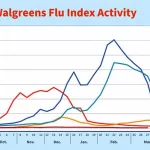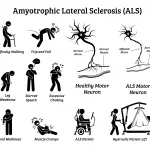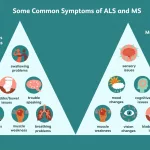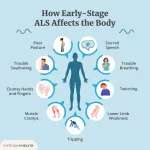If you’re scrolling through endless forums wondering whether a pill could finally quiet the racing thoughts that flare up at parties, meetings, or dates, the short answer is: it can help some people, but it isn’t a guaranteed fix.
Below you’ll get a clear rundown of the most common meds, their real‑world benefits and downsides, when they often fall short, and which non‑drug options can fill the gap – all explained in plain‑English so you can decide what feels right for you.
Understanding the Meds
First things first: what exactly is “social anxiety medication?” In clinical terms it’s any drug prescribed to lessen the intense fear of being judged, embarrassed, or humiliated in social settings. It’s different from “social anxiety therapy,” which uses talk‑based techniques to rewire the thoughts behind the fear.
Doctors usually decide if medication is appropriate after a thorough assessment – looking at how often the anxiety shows up, how badly it interferes with work or relationships, and whether any medical conditions might be contributing. The DSM‑5 criteria for social anxiety disorder (SAD) help them gauge severity.
When do clinicians consider a pill?
Typical triggers include:
- Consistent avoidance of social events that limits daily functioning.
- Physical symptoms that feel uncontrollable (heart pounding, shaky hands, sweaty palms).
- When therapy alone hasn’t moved the needle after a few months.
One board‑certified psychiatrist notes, “I usually explore medication when a patient’s Social Phobia Scale score exceeds 30 and they report daily impairment.”
Medication Classes
| Class | Typical Drugs | Why It’s Used | Key Pros | Common Cons |
|---|---|---|---|---|
| SSRIs | Sertraline, Paroxetine, Escitalopram, Fluoxetine, Citalopram, Fluvoxamine | First‑line, evidence‑based | Improves mood & anxiety in 2‑4 weeks; low abuse potential | Sexual dysfunction, weight change, initial jitter |
| SNRIs | Venlafaxine (Effexor XR), Duloxetine (Cymbalta) | Works when SSRIs fall short | Boosts serotonin + norepinephrine | Higher blood‑pressure risk, insomnia |
| Beta‑blockers | Propranolol, Atenolol | Target performance‑type anxiety (public speaking) | On‑demand effect; no daily dosing needed | Fatigue, cold extremities |
| Benzodiazepines | Alprazolam (Xanax), Clonazepam | Short‑term rescue for panic spikes | Fast onset (minutes) | Sedation, dependence, tolerance |
| Other/Off‑label | Buspirone, Gabapentin, MAOIs | Adjunct when first‑line fails | Different mechanisms | Dietary restrictions (MAOIs), dizziness |
What does the research say?
According to Medical News Today, SSRIs are the “first choice” because they’re safe, effective, and generally better tolerated than older antidepressants. GoodRx lists sertraline (Zoloft) and paroxetine (Paxil) as FDA‑approved options with the strongest evidence base. Medscape further notes that SSRIs carry a “minimal anticholinergic effect” compared with prior generations, making them a safer long‑term choice.
Benefits vs Risks
Potential benefits
When the right pill clicks, you may notice:
- Reduced avoidance of social events.
- Less physical agitation (heart racing, trembling).
- Greater willingness to engage in therapy or exposure exercises.
- Improved confidence that carries over to work and relationships.
Common side‑effects & medication risks
Every medication has trade‑offs. Below is a quick cheat‑sheet:
- Headache, nausea, or stomach upset – especially in the first two weeks.
- Sexual dysfunction – decreased libido or difficulty reaching orgasm (common with SSRIs).
- Weight changes – some people gain a few pounds, others lose appetite.
- Sleep disturbances – insomnia or vivid dreams.
- Withdrawal or dependence – mainly with benzodiazepines; tapering is essential.
When meds don’t work
It’s frustrating, but not unusual, to feel that a prescription isn’t moving the needle. Reasons include:
- Genetic differences in how your liver processes the drug.
- Unclear diagnosis (sometimes the anxiety stems from another condition).
- Fear of stigma leading to poor adherence.
- Side‑effects that outweigh benefits, prompting early discontinuation.
Real‑world anecdote
Jenna tried sertraline for eight weeks. She loved the calmer thoughts but was haunted by persistent nausea, so she stopped. Six months later, after committing to CBT alone, her anxiety rating dropped by 45 %. Her story shows that medication can be a helpful bridge, but it isn’t the only road to relief.
Expert angle
Dr. Maya Patel, a clinical psychologist, explains, “Therapy often outperforms medication for long‑term change because it trains the brain to react differently. Meds can give you the breathing room to practice those new skills.”
Meds + Therapy
Why the combo works
Think of medication as a temporary crutch and CBT as the physical therapy that builds stronger muscles. Research consistently shows that patients who combine SSRIs (or another appropriate med) with CBT have higher remission rates—sometimes up to 70 %—than those who choose only one approach.
Practical tip: Using meds as a “tool”
If you’re nervous about an upcoming presentation, a short‑acting beta‑blocker can calm the immediate surge of adrenaline while you practice the exposure techniques you’ve learned in therapy. That way, the medication doesn’t become a permanent habit; it simply clears the path for the skills to stick.
Quote from the Anxiety Network article
“Medication works faster, but CBT rewires the brain permanently,” notes the piece, illustrating why many clinicians recommend a blended plan.
Decision Checklist
Before you walk into the doctor’s office, have these questions ready:
Do I really need medication?
- Is my anxiety interfering with daily life (work, school, relationships)?
- Have I tried therapy or lifestyle changes first?
Which class fits my lifestyle?
- Do I want a daily pill (SSRIs, SNRIs) or an on‑demand option (beta‑blocker, benzodiazepine)?
- Can I tolerate possible side‑effects like drowsiness or sexual changes?
How long will I stay on it?
- Typical trial: 6–12 weeks to gauge effectiveness.
- Plan for tapering if you decide to stop.
What monitoring is required?
- Blood pressure checks for beta‑blockers or SNRIs.
- Regular mood check‑ins with your psychiatrist.
- Blood work for liver function if you’re on certain SSRIs.
Real‑World Stories
Success story – Anna’s 6‑month journey
Anna was terrified of networking events. Her psychiatrist prescribed sertraline, and she started weekly CBT. Within three months, her heart‑rate spikes during small gatherings dropped dramatically. By month six, she was leading a team meeting without medication “boosts,” relying solely on the coping skills she’d practiced.
Cautionary tale – Mark stopped after side effects
Mark began on paroxetine hoping to feel comfortable at family reunions. By week two, he experienced severe insomnia and a loss of appetite. He consulted his doctor, who switched him to an SNRI with a lower side‑effect profile. Mark’s story underscores why regular follow‑ups are essential.
Tip for writers
When you embed personal stories, keep names anonymous (or use first names only) and provide a brief timeline: start date, medication change, and outcome. This format builds trust without violating privacy.
Bottom Line
Social anxiety medication can be a valuable ally, but it isn’t a magic cure. The decision should weigh the potential relief against side‑effects, personal goals, and your willingness to pair the pill with therapy. Talk openly with a qualified psychiatrist, bring the checklist above, and consider a combined approach for the best chance at lasting freedom from the fear that holds you back.
If you’re ready to explore options, download our free “Medication‑Ready CBT Planner” or schedule a tele‑consult with a licensed provider today. Remember—you don’t have to navigate this alone, and every small step counts toward a calmer, more confident you.


















Leave a Reply
You must be logged in to post a comment.